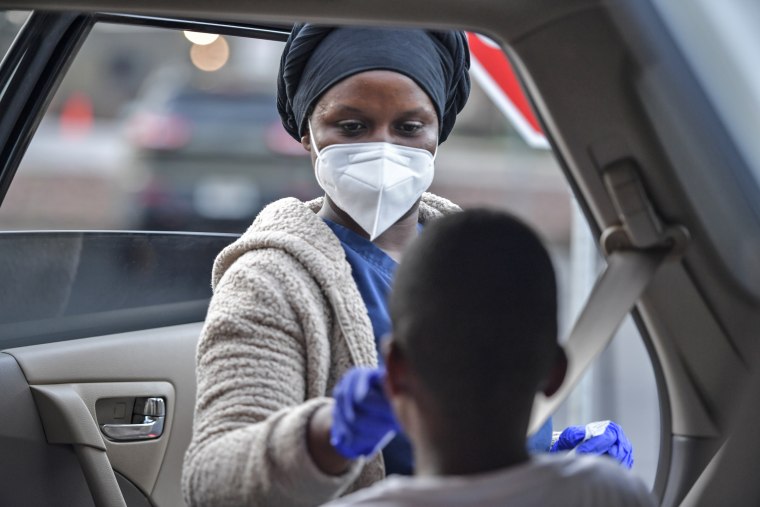The number of new Covid-19 cases in the United States has dropped by nearly a quarter in the last two weeks, further signaling a downward trend in the country’s fourth wave of the pandemic.
The country has averaged about 70,000 new cases per day from Oct. 14 to Oct. 27, a decrease of 22 percent from the two weeks prior. The number of Covid-related deaths also dropped during that time by about 14 percent.
Overall, new cases have fallen 57 percent since Sept. 13, the peak of the fourth wave, which saw an average of more than 166,000 new cases daily, according to NBC News’ Covid tally.
Shaun Truelove, an infectious diseases scientist at the Johns Hopkins Bloomberg School of Public Health, attributes the drop in cases to a combination of immunity from vaccination and people who have already had a Covid infection.
“We think that's happening because of the amount of immunity that's built up in the population,” he said. “That's really driving down the number of people who remain in the population that are susceptible.”
Nevada saw the biggest two-week drop in cases, down 55 percent. Cases have fallen significantly in Southern states: falling 48 percent in Georgia, 47 percent in South Carolina, and 46 percent in Tennessee.
Cases have decreased 40 percent in Florida, where hospitals were stretched to the breaking point this summer.
The shifts highlight how Covid surges have moved from one part of the country to another. Last fall, cases decreased in Southern states, while surging in the Plains region.
After vaccines were made available to most adults in April – and then teenagers in May – cases fell to their lowest levels. At that point, states eased mask mandates on guidance from the Centers for Disease Control and Prevention.
But the more virulent delta variant upended that when it became the dominant strain in July – and coupled with slowing vaccinations and breakthrough infections – led to a reopening delay in some states.
That month, the CDC reversed course, and recommended indoor mask use in areas with high levels of transmissibility – even for those who were fully vaccinated.
As cases now fall, so have the number of counties that fall under mask guidance, with 8 percent of all counties now falling to moderate or low levels of transmissibility.
Most of those counties were in Texas, Georgia and Missouri.
Meanwhile, vaccinations continue to gain footing. An advisory panel for the Food and Drug Administration voted to recommend the Pfizer-BioNTech vaccine for children ages 5 to 11 on Tuesday. That’s in addition to the rollout of booster shots and vaccine mandates for some workers.
Currently, more than 57 percent of the country’s population is fully vaccinated, with Vermont having more than 70 percent of its population fully vaccinated. Puerto Rico and Guam have pushed that number slightly higher with about 73 percent of their populations fully vaccinated.
West Virginia, which initially rolled out vaccines faster than most states, has the lowest vaccination rate in the country at 41 percent.
While cases across most of the U.S. are heading down, the colder months could bring another surge. The Institute for Health Metrics and Evaluation is projecting a 40 percent rise in cases by mid-January 2022.
However, Truelove, who is part of a team at Johns Hopkins that works on the Covid-19 Scenario Modeling Hub, projects a continued decline in new cases.
“Barring any introduction of a new variant, we should expect to have a relatively mild impact of Covid during that time,” he said.

